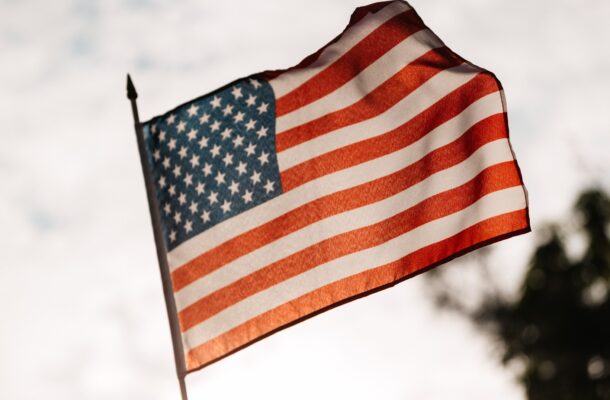The four ages of American foreign policy

Michael Mandelbaum’s latest book takes readers through America’s rise from weak, settler-nation to hyper-power hegemon over the past 250 years. While it leaves us speculating about the present fifth age currently taking shape, it is clear that the fourth has been demonstrably troubling.
For better or worse, American foreign policy has dominated international politics for at least a century. Low points include the recent wars in the Iraq and Afghanistan under presidents George W. Bush and Barack Obama, and erratic policy swings under President Donald Trump. Among the high points have been America’s intervention in the first and second World Wars and its leadership of the push-back against Russia’s invasion of Ukraine.
In his book, The Four Ages of American Foreign Policy, Michael Mandelbaum, a professor emeritus of American foreign policy at the Johns Hopkins University, offers readers a deep and analytical understanding of the most important events and the most significant personalities over the past 250 years, finishing his narrative in 2015. The book’s subtitle, “Weak Power, Great Power, Superpower, Hyperpower,” highlights the evolution of America’s role in international relations as it became increasingly influential.
According to Mandelbaum, from 1765 to 1865, America was a weak power mainly interested in defending its independence and expanding its territory across North America. From 1865 to 1945, America was one of several great powers, competing and cooperating with other great powers while carving out its own sphere of influence in Central America and the eastern Pacific in the process.
By the time America entered the period 1945 to 1990, it had became a superpower competing politically, economically, militarily, and ideologically with the world’s other superpower, the Soviet Union. And from 1990 to 2015, America was the world’s only “hyperpower” (a term used by former French foreign minister, Hubert Vedrine).
During this latter period, America had no real rival, and enjoyed its greatest freedom of action in the international arena. In contrast with earlier periods, the hyperpower period was riddled with failures and mistakes not limited to the Iraq War, the expansion of NATO to eastern Europe, and the efforts to promote democracy abroad, which often failed as the target countries lacked the necessary political values, economic and political institutions, and experience.
How did America achieve its remarkable increase in power over the 250 year period? Mandelbaum argues that America grew its population through immigration, its territory by conquest and purchase, and its economy by mastering the techniques of the industrial revolution. While the industrial revolution began in Great Britain at the end of the 18th century, by the end of the 19th century the US was at the cutting edge, and already the largest economy in the world.
Nevertheless, America did manage to win its independence from the British Empire while still being only a weak power at the time. Mandelbaum argues that America relied on the three techniques that weak powers can use against stronger powers. Like Ukraine today, America was willing to fight. In these circumstances, a stronger power may decide that it is not really worth the cost associated with defeating the weaker power, even though it could.
Second, the geography of America’s settlement was also a factor, writes Mandelbaum. Its 13 colonies stretched from Maine to Georgia, a distance of almost 1500 miles, which was enormous by European standards and difficult to conquer.
Further, the colonials could always retreat into the vast hinterland. Third, America got help from other strong states which were the rivals of Great Britain, notably France, without which it could never have become independent.
Mandelbaum argues that there have been three principal continuities in American foreign policy. First, it has been unusually ideological. It has promoted and sought to export its own domestic values abroad, especially democracy with the intention of building peace among them.
Woodrow Wilson was the president most closely associated with this approach. But “Wilsonianism” also competed with Realpolitik, the approach to foreign policy most closely associated with Wilson’s rival, Theodore Roosevelt, who was most concerned with matters of power and defending American “interests.”
Second, America’s foreign policy has very often used economic instruments when it did not want to use force. Mandelbaum argues that even when sanctions are not fully effective, they may be partially so. For example, during the Cold War, early sanctions may have weakened Cuba and limited its ability to spread revolution, even though the regime remains in place today.
Third, it has been unusually democratic, with the American public having a broad influence on the formation and conduct of foreign policy. In American history, there is a recurrent pattern of dramatic events, like the tragic attacks of 9/11, galvanising public opinion, which demands a robust response or at least a sign of disapproval. But while public opinion can push America to war, it can also turn it against wars and compel the government to withdraw – as in Vietnam, Afghanistan, and Iraq – when the costs in terms of American casualties become too high.
America has been involved in many wars, which have been the midwife of the transition from one American foreign policy age to another. But Mandelbaum argues that America has not been a warlike nation. Apart from the Mexican War of 1846-48, each of these wars was seen by America as being waged for defensive purposes.
In the cases of the Revolutionary War, the Civil War, and World War II, America had the good fortune to have great commanders-in-chief, namely George Washington, Abraham Lincoln, and Franklin D. Roosevelt, respectively. By contrast, Mandelbaum regards Thomas Jefferson and James Madison as being America’s least competent foreign policy presidents.
A frustrating aspect of this excellent and very readable book is that its main narrative concludes in 2015, with only minimal treatment of Ukraine and very curiously no mention of Donald Trump, who turned American foreign policy upside down. In some more recent webinars, Mandelbaum has offered a few thoughts about the nascent fifth age. While contours are taking shape, Mandelbaum is reluctant to suggest a moniker.
This fifth age of American foreign policy does have both similarities and differences with the Cold War, with America being part of a major coalition trying to deter aggressive countries around the world. Now America confronts three regional adversaries – Russia in Europe, China in Asia, and Iran in the Middle East – whereas there was only one during the Cold War, the Soviet Union.
The present age is more complicated in that the Soviet Union wasn’t part of the global economy, but China is a major economic force, and Russia and Iran are important suppliers of energy.
Mandelbaum argues that the big issue looking ahead will be whether America will continue to be willing to lead the world that it created after World War II. When a country is deeply divided, it compromises its ability to conduct foreign policy and to provide the public goods to which the world is accustomed. And yet there could be a hint of optimism. The war in Ukraine shows, for the moment at least, how America can still respond effectively when both its values and interests are affronted by rogue regimes.
While there are many books on American foreign policy, Mandelbaum’s new book offers an excellent introduction to the subject in an analytical and readable way.
This review of Michael Mandelbaum, The Four Ages of American Foreign Policy: Weak Power, Great Power, Superpower, Hyperpower. (Oxford University Press, 2022) was published by The Australian Institute for International Affairs.
John West is adjunct professor at Tokyo’s Sophia University and executive director of the Asian Century Institute. His recent book “Asian Century … on a Knife-Edge” was reviewed in Australian Outlook.















